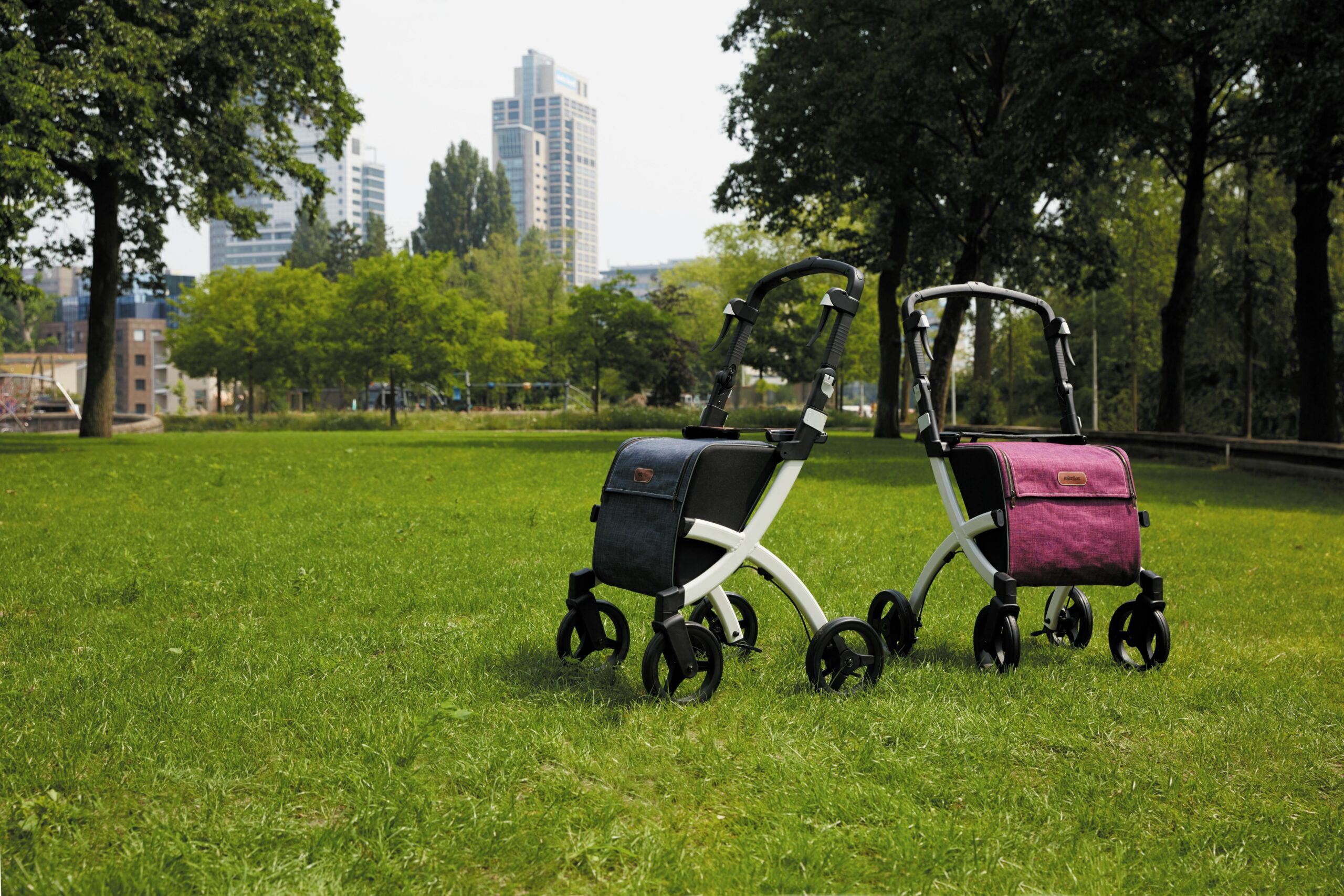Urban Air Mobility is reshaping how we envision transportation, promising to transform congested cityscapes into streamlined, three-dimensional networks of efficient travel.
🚁 The Dawn of a New Transportation Era
Imagine leaving your downtown office and boarding an electric vertical takeoff and landing (eVTOL) aircraft that whisks you across the city in minutes, bypassing the gridlocked streets below. This isn’t science fiction—it’s the rapidly approaching reality of Urban Air Mobility (UAM). As cities worldwide grapple with increasing population density, strained infrastructure, and environmental concerns, UAM emerges as a transformative solution that could fundamentally alter our relationship with urban transportation.
The concept of flying cars has captured human imagination for decades, but recent technological breakthroughs in electric propulsion, autonomous systems, battery technology, and advanced materials have finally made this vision achievable. Major aerospace companies, innovative startups, and even automotive manufacturers are investing billions in developing vehicles and infrastructure that will enable safe, efficient, and sustainable air travel within urban environments.
Understanding the Urban Air Mobility Ecosystem
Urban Air Mobility represents far more than simply flying vehicles. It’s a comprehensive ecosystem encompassing aircraft design, vertiport infrastructure, air traffic management systems, regulatory frameworks, and integration with existing transportation networks. This holistic approach ensures that UAM doesn’t exist in isolation but becomes a seamless component of multimodal urban transportation.
At the heart of this ecosystem are eVTOL aircraft—electrically powered vehicles capable of vertical takeoff and landing, eliminating the need for traditional runways. These aircraft combine the convenience of helicopters with the efficiency and environmental friendliness of electric propulsion. Most designs feature multiple rotors for redundancy and safety, with many incorporating tilting mechanisms or hybrid configurations to optimize performance for both vertical and forward flight.
Key Components Driving UAM Forward
The successful implementation of Urban Air Mobility relies on several interconnected technological and infrastructural elements. Electric propulsion systems have advanced dramatically, offering quieter operation compared to traditional combustion engines—a critical factor for urban acceptance. Modern battery technology, while still evolving, now provides sufficient energy density to make short to medium-range urban flights commercially viable.
Autonomous flight systems represent another cornerstone of UAM. While initial operations will likely involve human pilots, the long-term vision includes increasingly autonomous aircraft that can navigate complex urban environments safely and efficiently. Advanced sensors, artificial intelligence, and machine learning algorithms work together to enable real-time decision-making, obstacle avoidance, and route optimization.
Vertiports—the takeoff and landing infrastructure for UAM—must be strategically distributed throughout cities. Unlike traditional airports requiring vast land areas, vertiports can be integrated into existing structures like rooftops, parking garages, or dedicated small footprint facilities. These hubs will feature charging stations, passenger facilities, and integration points with ground transportation.
🌍 Environmental Benefits and Sustainability
One of the most compelling arguments for Urban Air Mobility is its potential environmental impact. Electric propulsion produces zero direct emissions, contributing to improved air quality in urban centers already struggling with pollution. When powered by renewable energy sources, the carbon footprint of UAM operations drops even further, aligning with global climate goals and sustainability commitments.
The efficiency gains from aerial routes cannot be understated. Ground transportation is constrained by road networks, traffic signals, and congestion, resulting in substantial time and energy waste. Aircraft following direct three-dimensional routes minimize travel distance and time, translating to reduced overall energy consumption per passenger-mile when compared to conventional urban travel during peak hours.
Noise pollution, historically a significant concern with aviation, is being addressed through innovative design. Electric motors operate more quietly than combustion engines, and distributed propulsion systems with multiple smaller rotors generate less intrusive sound profiles. Ongoing research focuses on optimizing rotor design and flight paths to minimize acoustic impact on communities below.
Economic Implications and Market Potential
The economic opportunities presented by Urban Air Mobility are substantial. Market research suggests the UAM industry could be worth hundreds of billions of dollars within the next two decades. This growth encompasses not just aircraft manufacturing but extends to infrastructure development, maintenance services, operations, technology development, and countless supporting industries.
Job creation will span multiple sectors and skill levels. Pilots, air traffic controllers, maintenance technicians, vertiport operators, software developers, and customer service professionals will all find opportunities in this emerging field. Educational institutions are already developing specialized training programs to prepare the workforce for these new roles.
Accessibility and Pricing Models
Initially, UAM services will likely command premium pricing, positioning them as high-end alternatives for time-sensitive travelers, business executives, and affluent commuters. However, as technology matures, production scales, and operational efficiency improves, costs are expected to decrease significantly. Industry projections suggest that within a decade, UAM could become competitive with ground-based ride-sharing services for certain routes.
Various business models are being explored. On-demand services similar to current ride-hailing apps represent one approach, offering flexibility and convenience. Scheduled shuttle services along popular routes could provide more predictable, cost-effective options. Subscription models might appeal to regular commuters, while integration with existing transportation networks could enable seamless multimodal journeys.
🛡️ Safety Standards and Regulatory Framework
Safety remains the paramount concern for Urban Air Mobility implementation. Aviation already maintains exceptional safety standards, and UAM must meet or exceed these benchmarks to gain public trust and regulatory approval. Multiple redundant systems, rigorous testing protocols, comprehensive pilot training, and conservative operational parameters form the foundation of UAM safety culture.
Regulatory bodies worldwide are actively developing frameworks specific to UAM operations. The Federal Aviation Administration (FAA) in the United States, the European Union Aviation Safety Agency (EASA), and other international authorities are collaborating to establish standards for aircraft certification, pilot licensing, operational procedures, and airspace management. This coordination ensures consistency and facilitates international operations as the industry expands.
Air traffic management for UAM presents unique challenges. Traditional systems weren’t designed to handle the volume and complexity of low-altitude urban flights. Next-generation Unmanned Traffic Management (UTM) systems leverage digital communications, real-time data sharing, and automated coordination to safely manage high-density operations. These systems will integrate with existing air traffic control infrastructure while providing specialized capabilities for urban environments.
Infrastructure Integration and Urban Planning
Successful UAM implementation requires thoughtful integration with existing urban infrastructure and future city planning. Vertiports must be accessible yet not disruptive, balancing operational requirements with community needs. Rooftop installations maximize space efficiency in dense urban cores, while ground-level facilities might serve suburban or less congested areas.
Connectivity with ground transportation is essential. Passengers shouldn’t view UAM in isolation but as one component of their journey. Strategic vertiport placement near transit hubs, business districts, airports, and residential centers facilitates seamless transitions between transportation modes. Digital integration through unified booking and payment systems further enhances convenience.
Smart City Synergies
Urban Air Mobility aligns naturally with broader smart city initiatives. Real-time data from UAM operations—including traffic patterns, weather conditions, and passenger demand—can inform urban planning decisions and optimize city-wide transportation networks. Integration with Internet of Things (IoT) sensors, smart infrastructure, and centralized management platforms creates a responsive, efficient urban mobility ecosystem.
Building design may evolve to accommodate UAM. Future developments might incorporate vertiport facilities from the outset, much as buildings now include parking structures. Zoning regulations and architectural guidelines will adapt to this new reality, balancing functional requirements with aesthetic considerations and community impact.
✈️ Leading Players and Innovation Landscape
The UAM industry features a diverse array of participants. Established aerospace giants like Boeing, Airbus, and Embraer bring decades of aviation expertise and resources to eVTOL development. Their projects leverage proven engineering principles while incorporating cutting-edge technologies to create certified, production-ready aircraft.
Innovative startups such as Joby Aviation, Lilium, Volocopter, and Archer Aviation are pushing boundaries with fresh approaches and agile development methodologies. These companies often focus specifically on UAM, allowing them to optimize designs for urban environments without legacy constraints. Many have secured substantial funding and formed partnerships with established industry players.
Automotive manufacturers are also entering the space. Companies like Hyundai, Toyota, and Geely recognize UAM as a natural extension of mobility services and bring expertise in mass production, customer experience, and integrated transportation ecosystems. This cross-industry collaboration accelerates development and brings diverse perspectives to problem-solving.
Challenges on the Path to Implementation
Despite tremendous progress, significant challenges remain before Urban Air Mobility becomes commonplace. Battery technology, while improving, still limits range and payload capacity. Continued advancement in energy storage is essential for UAM to reach its full potential, with solid-state batteries and alternative energy systems representing promising avenues.
Public acceptance cannot be taken for granted. Many people harbor reservations about aircraft operating overhead, concerns about safety, noise, privacy, and visual impact. Comprehensive community engagement, transparent communication about safety measures, demonstration programs, and gradual implementation can help build trust and acceptance.
Regulatory processes, while progressing, involve inherent complexity and time requirements. Achieving certification for entirely new vehicle categories demands extensive testing and documentation. Balancing thoroughness with reasonable timelines challenges both manufacturers and regulators. International harmonization adds another layer of complexity for companies with global ambitions.
Weather and Operational Limitations
Weather conditions significantly impact UAM operations. While aircraft can handle moderate weather, severe conditions like thunderstorms, high winds, or heavy fog may ground flights. This unpredictability affects service reliability, a critical factor for commuters and businesses depending on UAM. Developing robust weather monitoring systems and conservative operational protocols ensures safety while maximizing availability.
Initial operational limitations will likely restrict UAM to daylight hours and visual flight conditions, particularly during early deployment phases. As technology matures, systems improve, and experience accumulates, operational envelopes will expand to include night operations and more challenging conditions, increasing utility and economic viability.
🌟 The Vision of Seamless Urban Mobility
The ultimate goal extends beyond simply adding flying vehicles to cities. True success means creating a seamless, integrated mobility experience where travelers effortlessly move between modes—walking, cycling, public transit, ground vehicles, and aerial transportation—guided by intelligent systems that optimize for time, cost, comfort, and environmental impact.
Mobility-as-a-Service (MaaS) platforms will play a central role in this vision. Users access a single application to plan, book, and pay for journeys incorporating multiple transportation modes. Real-time optimization considers traffic conditions, weather, vehicle availability, and user preferences to recommend the best routing. UAM becomes one option within a comprehensive mobility ecosystem rather than a standalone service.
This integration transforms how we design and experience cities. Reduced ground congestion frees road space for pedestrians, cyclists, and green spaces, improving urban livability. Business districts become more accessible without expanding road networks. Suburban and outlying areas gain better connectivity to urban cores, potentially easing housing pressures and creating new economic opportunities.
Preparing for the UAM Future
Stakeholders across multiple sectors must prepare for Urban Air Mobility’s arrival. City planners should incorporate UAM considerations into long-term urban development strategies, identifying potential vertiport locations and evaluating infrastructure requirements. Regulatory frameworks must continue evolving to enable innovation while ensuring safety and addressing community concerns.
Educational institutions play a crucial role in workforce development. Aviation programs must expand to address UAM-specific requirements, while broader STEM education prepares future engineers, technicians, and innovators. Public awareness campaigns help communities understand UAM benefits, safety measures, and what to expect as services launch.
Investment in supporting infrastructure—electrical grid capacity, charging networks, communication systems—must parallel vehicle development. Public-private partnerships can share costs and risks while ensuring infrastructure meets both commercial needs and public interests. Early coordination prevents bottlenecks that could delay deployment or limit operational effectiveness.

🚀 Taking Flight Toward Tomorrow
Urban Air Mobility represents more than a new transportation option—it’s a fundamental reimagining of urban life and human connectivity. The convergence of electric propulsion, autonomous systems, advanced materials, and digital integration has created a unique moment where dreams of accessible aerial transportation can become reality.
The journey from concept to widespread implementation will span years and require sustained effort from technologists, regulators, urban planners, investors, and communities. Challenges remain, but the trajectory is clear. Pilot programs are already underway in forward-thinking cities worldwide, demonstrating viability and gathering crucial operational data.
As UAM matures and scales, it will contribute to addressing some of our most pressing urban challenges—congestion, pollution, accessibility, and livability. The three-dimensional city, where movement isn’t confined to ground level, opens possibilities for denser, greener, more efficient urban environments that enhance rather than compromise quality of life.
The future of urban transportation is being written today through innovation, collaboration, and bold vision. Urban Air Mobility will unlock new dimensions of connectivity, literally and figuratively, creating the seamless cityscape that will define 21st-century urban living. The sky is no longer the limit—it’s the pathway to tomorrow’s cities.
Toni Santos is an urban innovation writer and researcher dedicated to exploring how technology, sustainability, and design are reshaping the cities of tomorrow. With a deep interest in smart infrastructure and human-centered development, Toni studies how data-driven systems and green technologies can create more livable, resilient, and efficient urban environments. Fascinated by sustainable architecture, IoT integration, and next-generation mobility, Toni’s work connects environmental awareness with digital transformation. Through research and storytelling, he examines how intelligent planning and renewable innovation can redefine the relationship between people and their cities. Blending urban design, environmental science, and systems thinking, Toni documents the breakthroughs that are reimagining how we build, move, and coexist. His work highlights the architects, engineers, and technologists leading the charge toward smarter, greener futures. His work is a tribute to: Green architecture as the foundation for sustainable living IoT innovation shaping the infrastructure of connected cities Mobility systems and renewable energy driving urban transformation Whether you’re an architect, engineer, or city planner, Toni Santos invites you to explore the technologies and ideas building the smart, sustainable cities of the future — one street, one system, one vision at a time.




